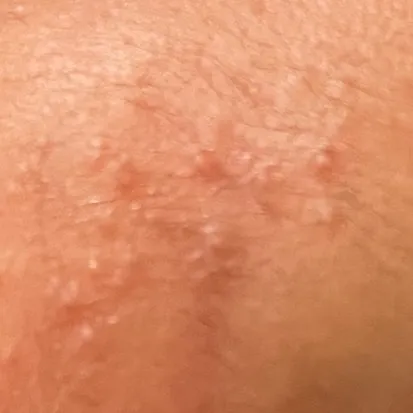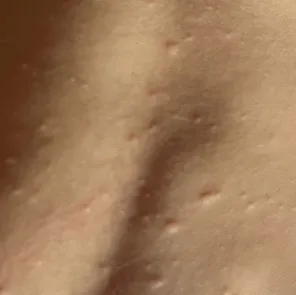![POOJA KOTHARI profile image of POOJA KOTHARI]() POOJA KOTHARIMom of a 8 yr 9 m old boy1 Year ago
POOJA KOTHARIMom of a 8 yr 9 m old boy1 Year agoA. Rashes in infants can be caused by a variety of factors, and it's important to identify the cause to determine the best course of action. Here are some common types of rashes and general steps you can take:
### Common Causes of Rashes in Infants:
1. **Diaper Rash**: Caused by prolonged exposure to wet or dirty diapers.
2. **Eczema (Atopic Dermatitis)**: Often appears as red, itchy patches on the skin.
3. **Heat Rash (Miliaria)**: Small red bumps caused by overheating.
4. **Contact Dermatitis**: Reaction to soaps, lotions, or detergents.
5. **Viral Rashes**: Often accompany viral infections like roseola or chickenpox.
6. **Allergic Reactions**: Can be caused by foods, medications, or environmental allergens.
### Steps to Take:
1. **Keep the Skin Clean and Dry**:
- For diaper rash, change diapers frequently and ensure the area is clean and dry before putting on a new diaper.
- Allow your baby to have some diaper-free time to let the skin breathe.
2. **Use Mild, Hypoallergenic Products**:
- Bathe your baby with mild, fragrance-free soap.
- Use hypoallergenic lotions and laundry detergents.
3. **Apply Appropriate Creams**:
- Diaper rash creams with zinc oxide can provide a protective barrier.
- For eczema, use a thick, fragrance-free moisturizer. Sometimes, a mild steroid cream may be prescribed by a pediatrician.
4. **Keep Baby Cool**:
- Dress your baby in loose, breathable clothing.
- Avoid overheating by keeping the environment cool and well-ventilated.
5. **Avoid Known Irritants**:
- If you suspect a certain food, fabric, or product is causing the rash, try to eliminate it and see if the rash improves.
6. **Monitor the Rash**:
- Keep an eye on the rash for any changes in size, color, or texture.
- Note any other symptoms such as fever, swelling, or behavior changes.
### When to Consult a Pediatrician:
- If the rash is severe, spreading, or accompanied by fever or other symptoms.
- If the rash does not improve with home care within a few days.
- If you suspect an allergic reaction or if the rash looks infected (e.g., increased redness, warmth, swelling, pus).
### Immediate Care Tips:
- **Bathing**: Give your baby a lukewarm bath with a mild, fragrance-free soap.
- **Hydration**: Keep your baby well-hydrated.
- **Comfort**: Distract your baby from scratching to prevent further irritation.
### Conclusion:
Most rashes in infants are benign and can be managed with simple home care. However, if you're unsure about the cause or the rash doesn't improve, seeking advice from a pediatrician is always the best course of action.





.svg)
.svg)
.png)








Post Answer